![[Ganita Prakash Class 8] History of Numbers - Teachoo - Introduction - Introduction](https://cdn.teachoo.com/34b93b2e-e508-4a17-b331-66fcc34a0246/slide5.jpg)

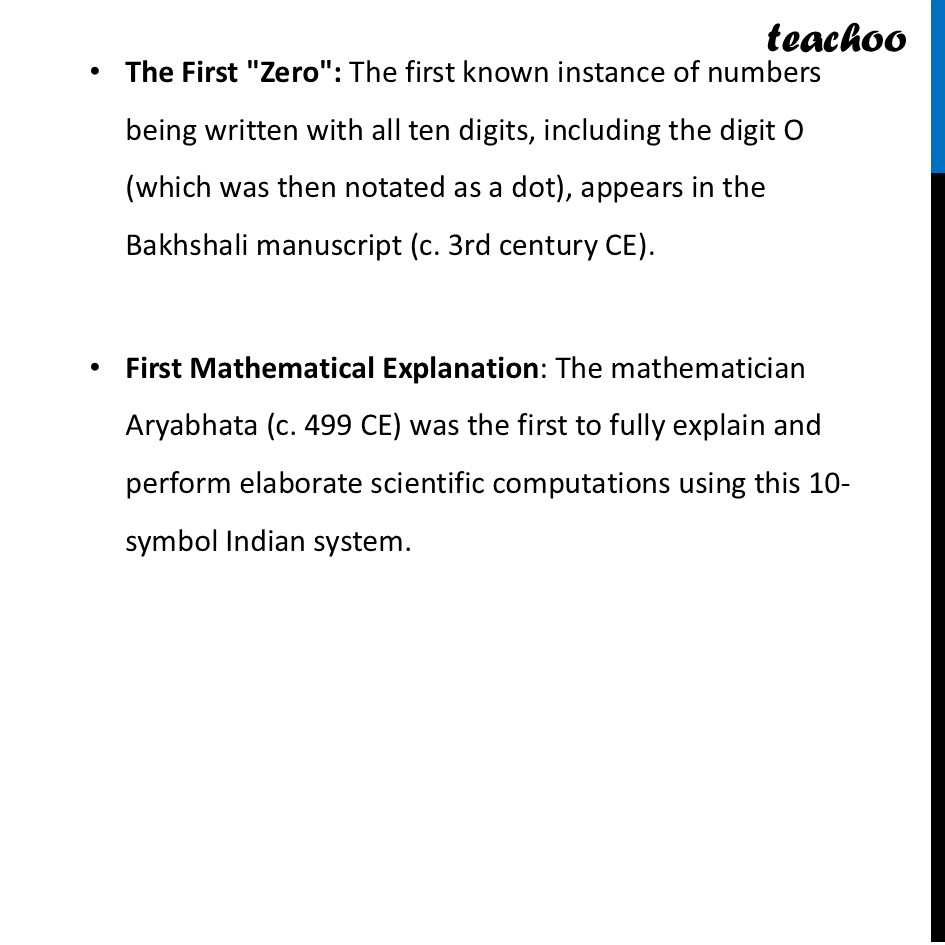
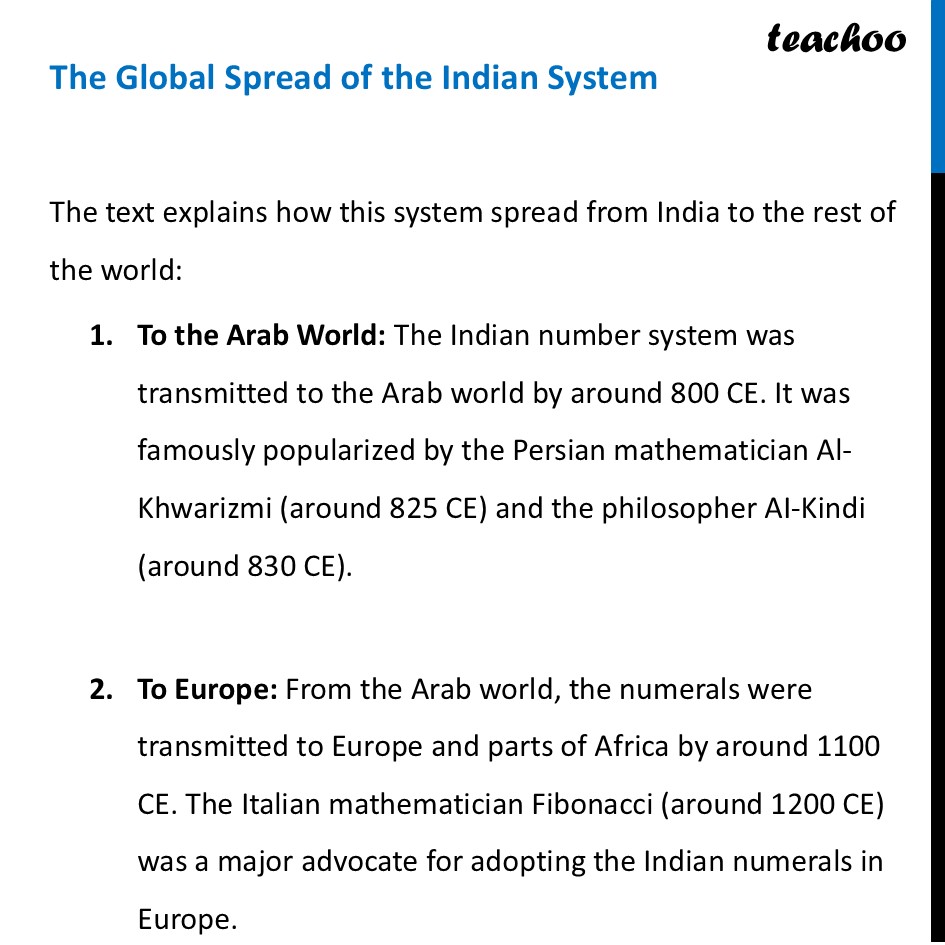
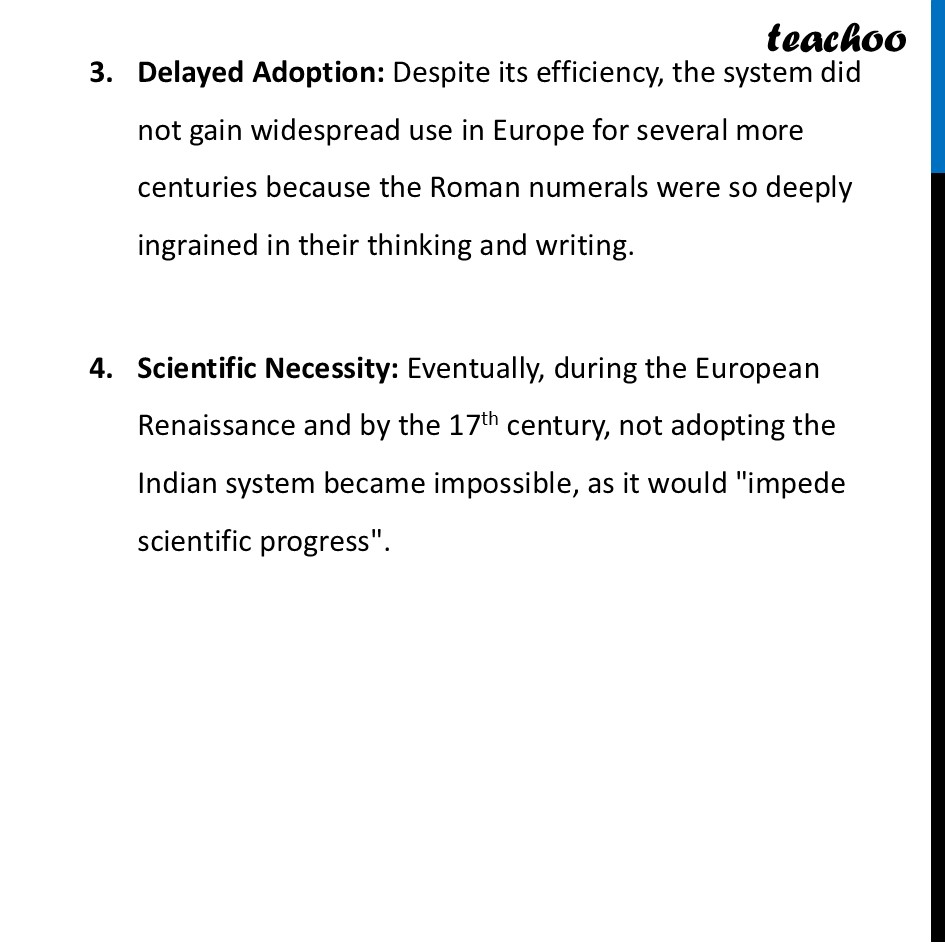
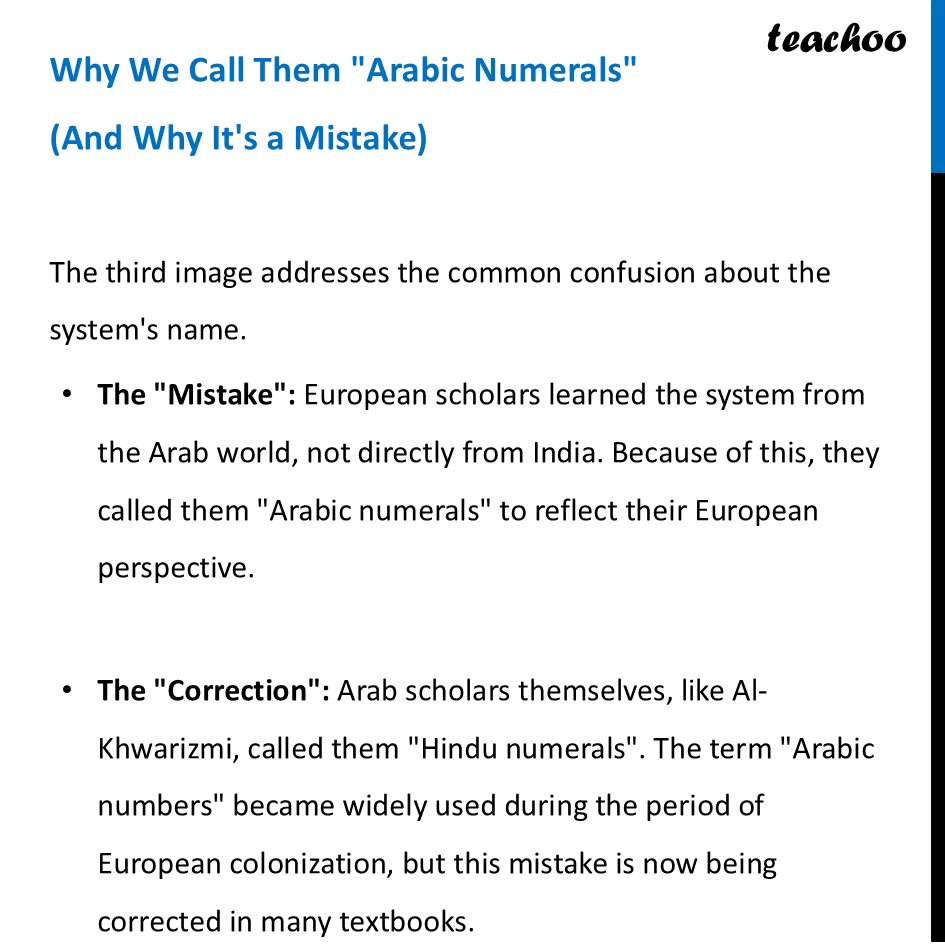
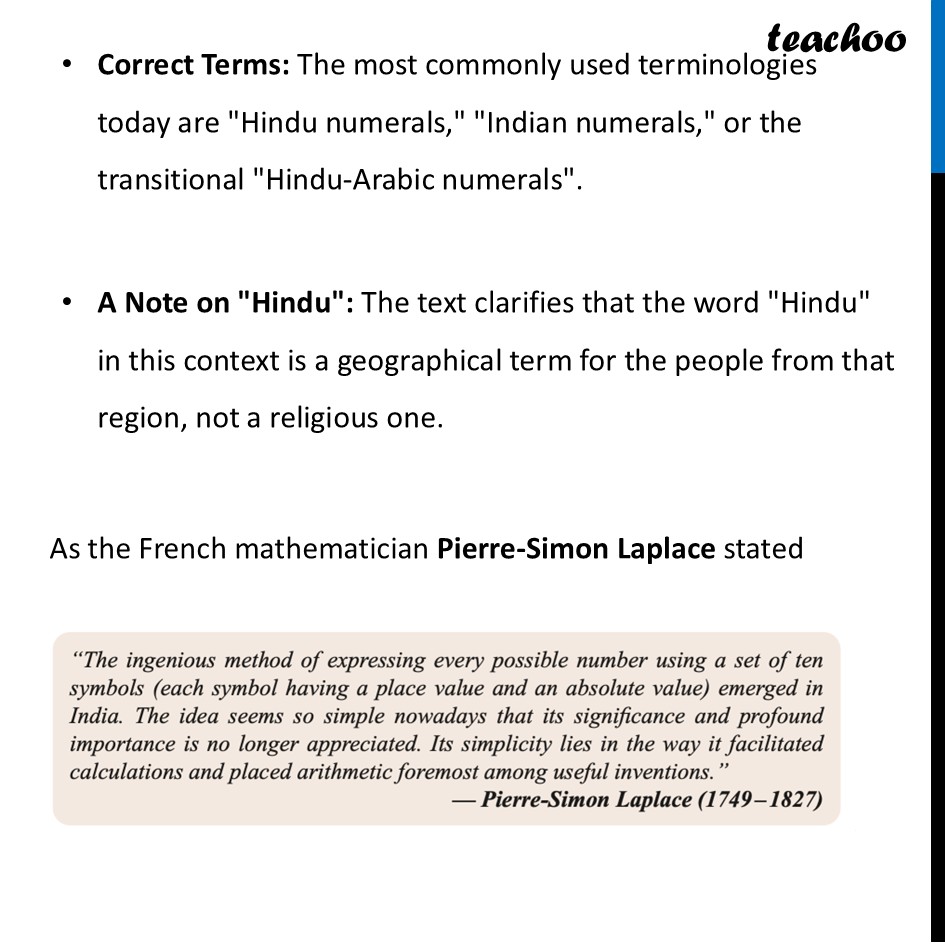
Last updated at November 19, 2025 by Teachoo
![[Ganita Prakash Class 8] History of Numbers - Teachoo - Introduction - Introduction](https://cdn.teachoo.com/34b93b2e-e508-4a17-b331-66fcc34a0246/slide5.jpg)






Transcript
History of NumbersLet’s look at this one-by-one The Need for Counting and the Origin of Our Numbers Reema's father explains that humans have had the need to count since the Stone Age. This need was purely practical and essential for survival: To determine the quantity of food they had. To count the number of animals in their livestock. To keep track of details regarding trade. To manage offerings given in rituals. To track the passage of time, such as predicting the new moon, full moon, or the onset of a new season. The Indian Origin of Modern Numerals The text directly answers Reema's question about our "modern form" of numbers, tracing its complete origin to India. Ancient Oral Tradition: The structure of our number system originated in India thousands of years ago. Ancient Indian texts, like the Yajurveda Samhita, already had names for numbers based on powers of 10, such as eka (one), dasha (ten), shata (hundred), and sahasra (thousand), with names going all the way up to 10^12 and beyond. Written Digits (0-9): The way we write numbers today, using the ten digits 0 through 9 , also originated and was developed in India around 2000 years ago. The First "Zero": The first known instance of numbers being written with all ten digits, including the digit O (which was then notated as a dot), appears in the Bakhshali manuscript (c. 3rd century CE). First Mathematical Explanation: The mathematician Aryabhata (c. 499 CE) was the first to fully explain and perform elaborate scientific computations using this 10-symbol Indian system. The Global Spread of the Indian System The text explains how this system spread from India to the rest of the world: To the Arab World: The Indian number system was transmitted to the Arab world by around 800 CE. It was famously popularized by the Persian mathematician Al-Khwarizmi (around 825 CE) and the philosopher AI-Kindi (around 830 CE). To Europe: From the Arab world, the numerals were transmitted to Europe and parts of Africa by around 1100 CE. The Italian mathematician Fibonacci (around 1200 CE) was a major advocate for adopting the Indian numerals in Europe. Delayed Adoption: Despite its efficiency, the system did not gain widespread use in Europe for several more centuries because the Roman numerals were so deeply ingrained in their thinking and writing. Scientific Necessity: Eventually, during the European Renaissance and by the 17th century, not adopting the Indian system became impossible, as it would "impede scientific progress". Why We Call Them "Arabic Numerals" (And Why It's a Mistake) The third image addresses the common confusion about the system's name. The "Mistake": European scholars learned the system from the Arab world, not directly from India. Because of this, they called them "Arabic numerals" to reflect their European perspective. The "Correction": Arab scholars themselves, like Al-Khwarizmi, called them "Hindu numerals". The term "Arabic numbers" became widely used during the period of European colonization, but this mistake is now being corrected in many textbooks. Correct Terms: The most commonly used terminologies today are "Hindu numerals," "Indian numerals," or the transitional "Hindu-Arabic numerals". A Note on "Hindu": The text clarifies that the word "Hindu" in this context is a geographical term for the people from that region, not a religious one. As the French mathematician Pierre-Simon Laplace stated "The ingenious method of expressing every possible number using a set of ten symbols (each symbol having a place value and an absolute value) emerged in India. The idea seems so simple nowadays that its significance and profound importance is no longer appreciated. Its simplicity lies in the way it facilitated calculations and placed arithmetic foremost among useful inventions." —Pierre-Simon Laplace (1749-1827)